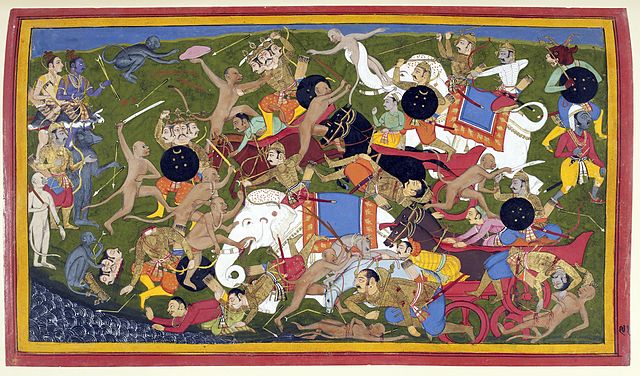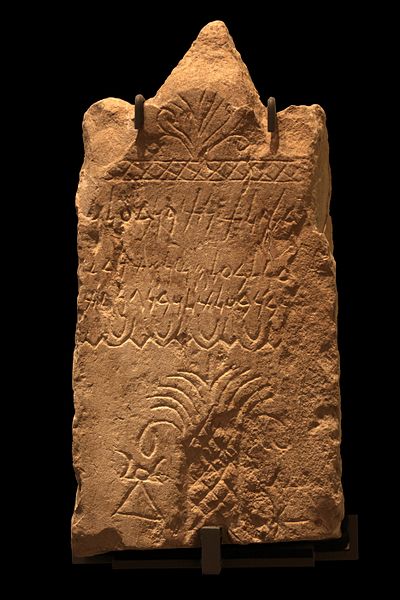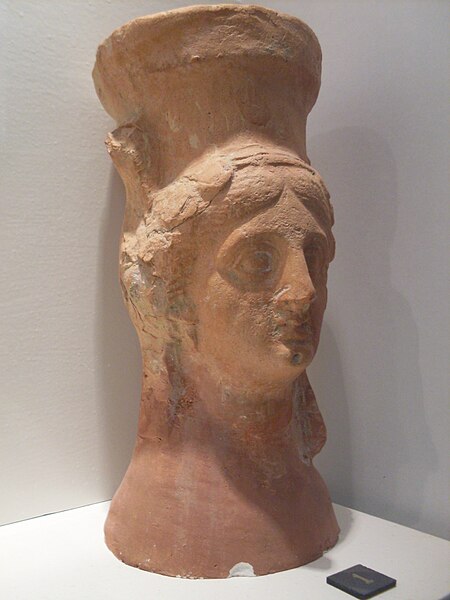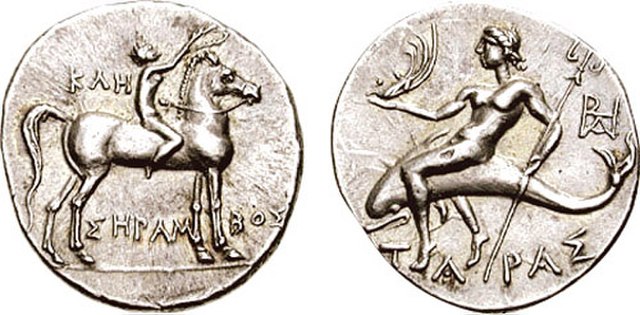A war elephant was an elephant that was trained and guided by humans for combat. The war elephant's main use was to charge the enemy, break their ranks, and instill terror and fear. Elephantry is a term for specific military units using elephant-mounted troops.
War elephants depicted in Hannibal crossing the Rhône (1878), by Henri Motte
Indian elephant sword on display at the Metropolitan Museum of Art, two feet (61 cm) long
Rajput painting depicting a war elephant in an army
A 17th-century depiction of the war of Lanka in the ancient Indian epic Ramayana, showing war elephants
Ancient Carthage was an ancient Semitic civilisation based in North Africa. Initially a settlement in present-day Tunisia, it later became a city-state and then an empire. Founded by the Phoenicians in the ninth century BC, Carthage reached its height in the fourth century BC as one of the largest metropoleis in the world. It was the centre of the Carthaginian Empire, a major power led by the Punic people who dominated the ancient western and central Mediterranean Sea. Following the Punic Wars, Carthage was destroyed by the Romans in 146 BC, who later rebuilt the city lavishly.
Stele with a Phoenician votive inscription, palm motif, and sign of Tanit, from the Carthage tophet, now in the Museum of Fine Arts, Lyon
The suicide of Queen Dido, by Claude-Augustin Cayot (1667–1722)
A Carthaginian ceramic perfume burner in the shape of a woman's head, Kerkouane Archaeological Museum
Coin from Tarentum, in southern Italy, during the occupation by Hannibal (c. 212–209 BC). ΚΛΗ above, ΣΗΡΑΜ/ΒΟΣ below, nude youth on horseback right, placing a laurel wreath on his horse's head; ΤΑΡΑΣ, Taras riding dolphin left, holding trident in right hand, aphlaston in his left hand.








